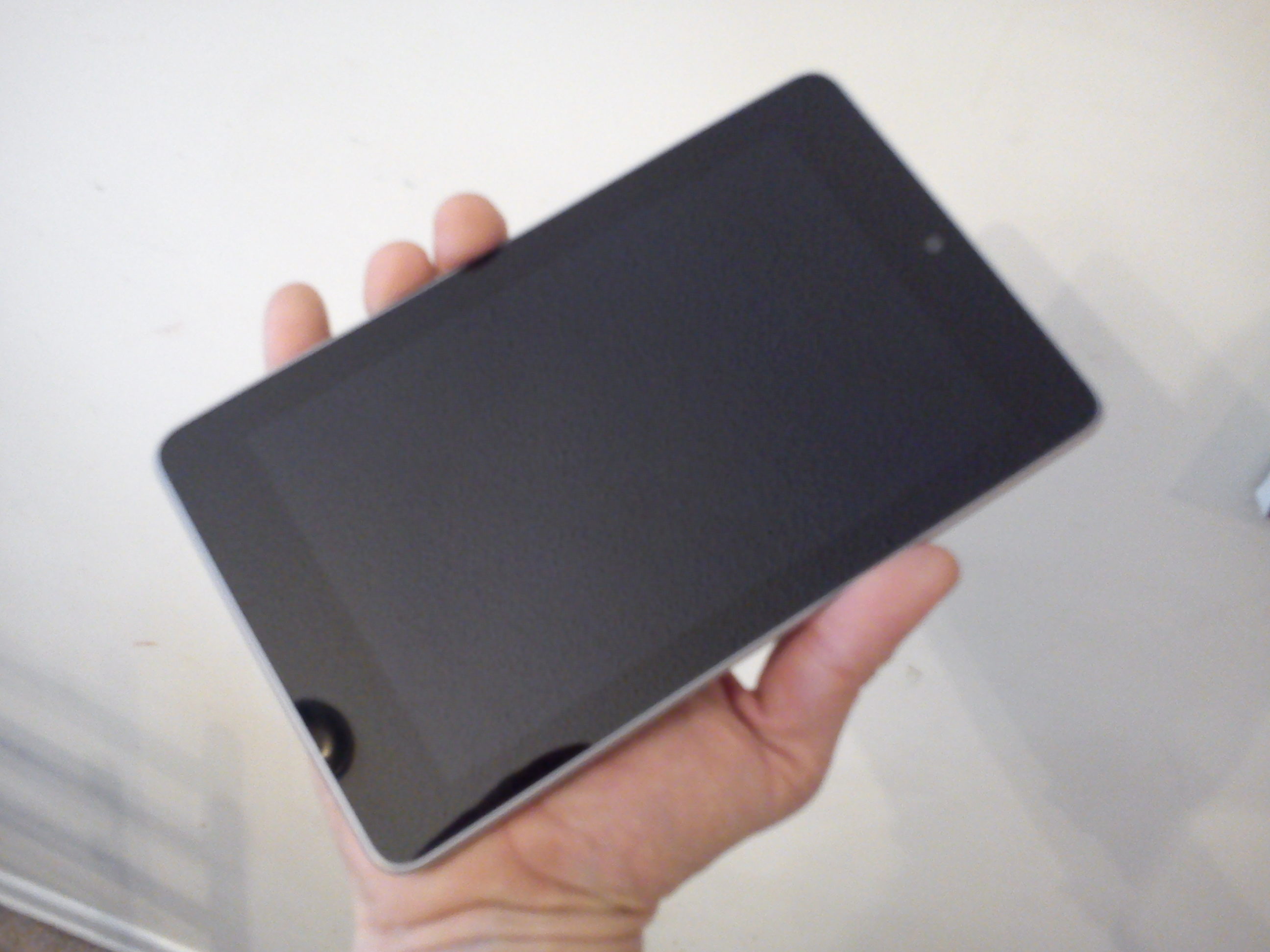Android 4.3 Fixes First-Gen Nexus 7 Slowdown Issue
Android 4.3 introduces fstrim which will help the eMMC controller take out the piled up trash.

AnandTech has discovered one feature introduced in Android 4.3 that you won't find in Google's recipe for the latest Jelly Bean: support for fstrim. Although this is good news for all Nexus device owners, it's even more so for first-generation Nexus 7 owners who've felt like tossing the 7 inch paperweight out the window. Android 4.3, it seems, brings new life to Google's former flagship tablet.
Let's rewind a bit. Out of the box, the Nexus 7 (2012) can be a speed demon. It's zippy and fun to use, and produces impressive graphics in Tegra-optimized games. But after a while the performance begins to degrade. It slows to an annoying crawl, thus forcing owners to wipe the slate clean and start over. After that, it's zippy all over again. Rinse and repeat.
AnandTech calls this a "storage I/O aging problem". When the tablet owner deletes a movie, TV episode or uninstalls an app, this isn't communicated directly to the eMMC controller. Thus it still treats the pages in NAND as having actual data even though the blocks are no longer in use. The data structure used by the controller maps both logical locations and physical locations in NAND, so the more locations that have to be tracked, the slower the internal NAND management works.
Enter fstrim. This application slides in between the operating system and the eMMC controller and tells the latter that specific blocks are no longer in use and ready for garbage collection. Thus the controller has less mapping to do and in turn speeds up the storage I/O performance. Fstrim will run once every 24 hours if the battery level is 80 percent or above when unplugged, or at 30 percent when plugged in, and untouched for an hour.
Before the Android 4.3 update, the first-gen Nexus 7's eMMC controller would pile up roadmaps of tracked data. For instance, say the user downloaded and installed a 1.5 GB game from Google Play. Eventually it's uninstalled, and is recognized as such by the operating system which declares that space fee and ready for more data. But until that space is rewritten by new data, the eMMC still considered that 1.5 GB of space as legit data and kept track of it. Now imagine all the deleted apps, movies and TV shows that keep piling up, and you have a busy eMMC controller and a very laggy tablet.
"Without TRIM the controller will track blocks that have data deleted by the filesystem, but the controller still believes it has data it needs to track," the report states. "TRIM is the signaling pathway through which the filesystem and OS can tell the controller that it can now consider those blocks unused and [ready] for garbage collection."
Because this new feature is baked into Android 4.3, all devices with the new OS should see a slight improvement in performance thanks to the new garbage collection. It's unfortunate that fstrim didn't arrive until the new Nexus 7 tablet hit the market, but it's better late than never.
Stay On the Cutting Edge: Get the Tom's Hardware Newsletter
Get Tom's Hardware's best news and in-depth reviews, straight to your inbox.
-
vmem Reply11269043 said:That still doesn't sound ideal, couldn't they do better than that?
err, at least for now, it's supposed to work this way. if you have Trim enabled on your desktop SSD, it does something similar
OSes are evolving rapidly, and I think we'll see much better long-term solutions in the coming year or two -
house70 Reply11269043 said:That still doesn't sound ideal, couldn't they do better than that?
The tablets' users beg to differ. -
BranFlake5 I'm having trouble with the notification light on my Nexus 4 after 4.3 update. Anyone else?Reply -
ddpruitt I'm surprised that it took this long. Some sort of trim support should have been there from the beginning.Reply -
jessterman21 I can attest - my Nexus 7 has been an absolute joy for the past 3 days. Well, seems like it compared to the last 3 months of lagginess.Reply -
teh_chem How does this fix problems? Wouldn't you only really benefit if (a) your device was never really near capacity, and (b) you did a clean install/update directly to 4.3. Otherwise, if it functions like SSDs in desktop OS's, you've lost most of the benefit of TRIM.Reply
I have noticed zero perceptible performance improvements since I got the 4.3 update. -
kawininjazx I had this problem, then I put Cyanogenmod on it and it runs like a champ. I wish they had this option earlier, but at least someone got it working, only took Google a year to fix it.Reply -
Mark Jacobson I beg to differ with your praise for 4.3.Reply
My Nexus 7 has slowed to a crawl SINCE I upgraded to 4.3. Worse still, my screen now refuses to auto-rotate.
Am I the only person who finds the "upgrade" to be a big step backwards...or did I somehow simultaneously introduce a virus when I upgraded to 4.3?